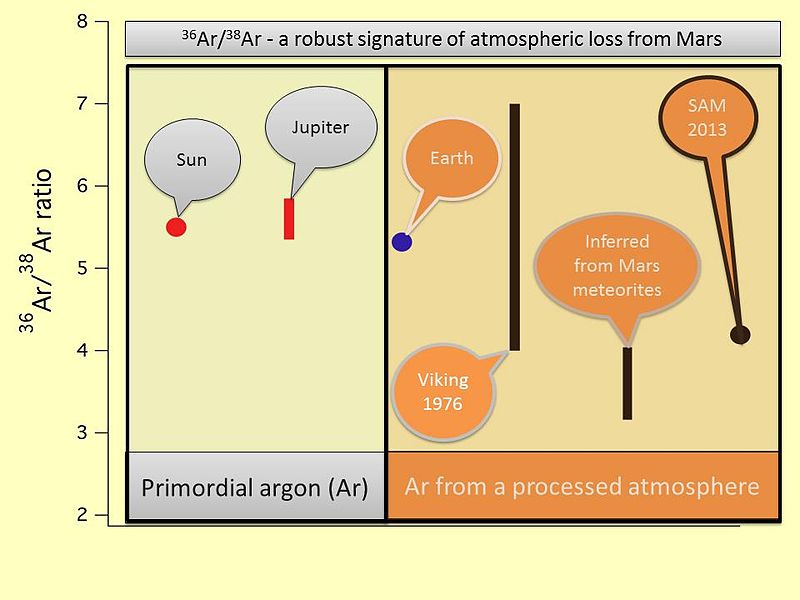
Caption: "Image PIA16818: argon isotopes provide strong evidence of atmospheric escape from Mars.
This image shows the ratio of the argon (Ar) isotope Ar-36 to the heavier isotope Ar-38 in various measurements. The point farthest to the right designates a new (2013) measurement of the ratio in the Martian atmosphere made by the quadrupole mass spectrometer in the Sample Analysis at Mars (SAM) suite of instruments on NASA's Curiosity Mars rover (2012--) which was part of the Mars Science Laboratory mission (2011--).
For comparison, the previous measurement from Mars by the Mars Viking project (1976--1982) in 1976 is shown also. The SAM result is at the lower end of the range of uncertainty of the Viking data, but compares well with ratios of argon isotopes from some Martian meteorites.
The value determined by SAM is significantly lower than the value for the Sun, Jupiter, and Earth which implies loss of the lighter isotope (Ar-36) compared to the heavier isotope (Ar-38) over geologic time.
The greater the mass, the harder it is for the atom to escape to space.
The fractionation of the argon isotopes provides clear evidence of the atmospheric escape from Mars." (Moderately edited.)
Features:
- To be brief: there has been
atmospheric escape from
Martian atmosphere
since there has been
preferential atmospheric escape
of the lighter isotope Ar-36.
- Furthermore, based on the
argon isotope
abundances, it has been argued that Mars probably
once had an atmosphere that was comparable in density to that of the current
Earth's atmosphere
(HI-192).
Image link: Wikipedia: File:PIA16818-MarsCuriosityRover-Argon-AtmosphericLoss.jpg.
Local file: local link: mars_atmosphere_escape.html.
File: Mars file: mars_atmosphere_escape.html.